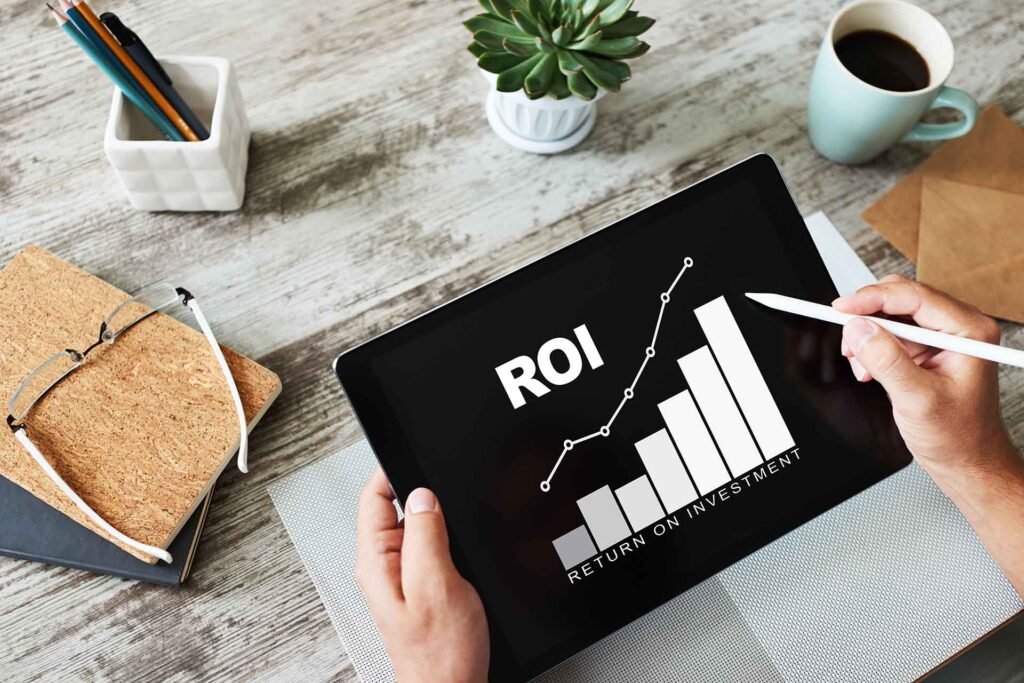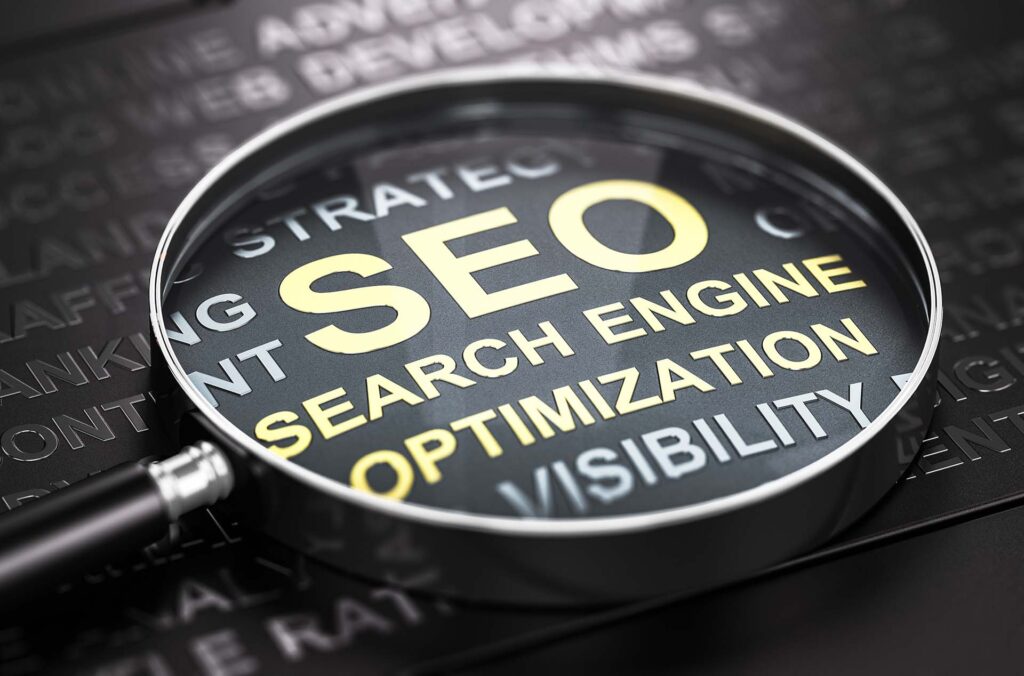Maximizing your advertising ROI on Google requires more than just setting up a campaign. It’s about strategically placing your ads where they matter most. So, if you have something to offer, chances are you’re better off knowing how to advertise on Google.
To make the most out of Google Ads, first, you need to understand how this pay-per-click (PPC) platform works. After you’ve set up your account, you should work on creating compelling ads that include clear headlines, strong calls to action, keyword themes, and other effective features. From then on, it’s all about monitoring the performance through analytics, and adjusting what’s necessary to get the best results. Working with an experienced digital advertising agency proves to be invaluable here.
Let’s Bring It Back to the Basics – What Is a Google Ad?
Once considered a luxury, digital marketing is now essential. This is especially true for small businesses trying to boost their overall online presence, which is, let’s face it, everything in today’s digital world.
Google Ads, previously known as Ad Words, is the largest ad publisher of the digital landscape in the US. According to Statista research, it accounts for almost 30% of all advertising revenue. This is a bid-based pay-per-click (PPC) platform, meaning that you pay for it only when a user clicks on your advert, making sure they’re genuinely interested in what you’re offering. This is pretty different from traditional advertising, for which you pay regardless of engagement.
How Do Google Ads Work?
At the core of this pay-per-click platform lies a bidding-like system, where you compete for visibility based on your budget, as well as the quality and relevance of your adverts. They will appear across the Search Engine Results Pages (SERPs) and millions of Google’s partner websites.

Knowing How To Use Google Ads Effectively Can Bring Immediate Results
Most new businesses struggle to get people on their websites, and most SEO marketing services take time to get results. But over the long run, the benefits of SEO reach far and wide, creating organic growth for your company and, therefore, helping you develop your business to new heights.
On the other hand, starting a Google Ads campaign can bring immediate results, and that’s why new businesses tend to take this route first. However, this doesn’t mean there aren’t some long-lasting advantages of taking this crucial step:
- Creating brand awareness – you might get organic search or direct traffic even when your advertising campaign ends,
- Landing page optimization – if you’ve boosted your landing pages for this campaign, there might also be an improvement in the number of organic visitors,
- Valuable data collection – you will be able to gain valuable insights into your ad’s performance through both Google Ads and Google Analytics, helping you adjust your strategies, including combining PPC and SEO.

A Brief Overlook of the Different Types of Google Ads
As we’ve discussed, Google Ads allows you to display your advertisements across the vast landscape of Google’s network. But when you add the ever-changing market trends into the mix of such versatile choices, creating the best strategy for your business can get pretty complicated.
Here, hiring a digital marketing agency can be the golden ticket for setting up your company for success. But before we get into more detail about getting the most out of your Google Ads campaign, let’s get one more crucial thing out of the way – the different types of advertising on Google. Here are the basics:
| Responsive Search Ads | Show up in SERPs alongside SEO-optimized results when a user searches for relevant keywords |
| Performance Max Ads | More of an all-encompassing strategy that uses different tools to get you the best results |
| Display Ads | Strategically positioned textual promotions and image banners shown on various partner websites |
| YouTube Ads | The content is shown either at the start or during video content on YouTube, as well as in other places on the website |
| Discovery Ads | Shown in places where users are most likely watching product reviews, including YouTube, or researching products |
| App Ads | Drive users to download your Android or iOS app directly, without the need to specifically search for it |
| Shopping Ads | Utilizes a user’s product catalog to show e-commerce optimized adverts across various platforms |
How To Create Google Ads in a Couple of Simple Steps
Finally, let’s get to the real deal – creating your first advertisements using this effective platform and maximizing your company’s return on investment (ROI). Here’s how to set it up:
Create an Account and Your First Campaign
First things first, it’s time to open your Google Ads account. You will need to enter the name of your business and the URL of your official website, as well as link any existing Google-affiliated accounts. This includes your YouTube channel and your Google Business Profile. After that, you will need to fill out billing and payment information. To get the whole ordeal going, select “New Campaign” at the top of the main dashboard, choose your goal, and click “Continue”.
Decide on the Bidding Strategy for Your Campaign
Once you’ve got a goal for your campaign, it’s time to select the bidding strategy that will work best for your business, as well as what you want to optimize that budget for, including leads, generating traffic, or ad conversion.
When it comes to bidding and ad spend allocation, you’ve got three main options. With cost-per-click (CPC), you will pay only when a user clicks on your advertisement. With cost-per-mille (CPM), this is done per 1,000 impressions. Finally, the cost-per-engagement (CPE) option allows you to pay when a user engages in a certain way, for example, if they watch a video or sign up for a list.
Create Your Target Audience
This is basically informing Google Ads where to find your potential customers. It includes choosing locations, spoken languages, and plenty of other interest categories. The more detailed you are, the better results you will be able to get. There are plenty of options available, so make the most of them.
Create the Ad Itself
Finally, creating the advertisement itself. This is a huge topic, and it’s best done with a professional SEO marketing agency by your side. This is because so many aspects factor into the whole equation, from your industry to the goals you’re trying to achieve. You’ll need a few ad groups to start, and there’s plenty that needs to be included – a URL, up to 15 headline options and 4 descriptions, numerous images, specific links, callouts, contact information, and more.
How To Advertise on Google – Essential Tips for Effective Strategies
The journey is not over once your Google Ads are all set up. There are plenty of ways to optimize your marketing strategies and turn the whole thing up a notch. Here are some important tips to get the most out of this endeavor:
- Prioritize your headlines – as already mentioned, you can include a maximum of 15 headlines for your adverts, so make sure to use them up and include relevant keywords and strong action words, leaving Google to do its magic and mix and match the ones that are most likely to convert,
- Include a clear call to action – for conversion-focused campaigns, make sure your call to action is simple and descriptive enough so the user has a clear understanding of what you’re offering and how to get it,
- Spend time writing your adverts – with Smart Campaign, Google will suggest some texts based on the information you’ve provided, so make sure you make tweaks to further optimize them, all while considering your target audience,
- Include keyword themes – using Keyword Planner is a must, as implementing relevant keyword themes will help the platform understand which of them will be targeted with your campaign, helping you boost the visibility of your advertisements,
- Make use of all available features – most features are optional, but including things like sitelinks and callouts can really make you outshine the competition,
- Keep up with analytics and reporting – the platform will track impressions, clicks, calls, as well as conversions, so make sure these valuable insights don’t go to waste,
- Keep testing and experimenting – even the adverts that perform the best can improve with performance tracking, so make sure to mix in new ad copies, visuals, and other features consistently.
Above All Else, Diversifying Your Marketing Efforts Is the Way To Go
Pay-per-click advertising is a great course of action. But, as with most things in life, versatility is the name of the game. First off, SEO and PPC can truly create some marketing magic together. However, to make the most out of your efforts, you should also know about the difference between SEO and PPC, using both avenues to your advantage.
On top of that, getting traffic from social media is brimming with possibilities. There’s no surprise here – scrolling is literally everyone’s favorite pastime nowadays. Moreover, social media platforms can also help a great deal in building brand awareness and customer engagement.
All in all, a comprehensive SEO strategy is needed – it can be the powerhouse that drives your business forward. With it, you will be able to boost your online presence, enhancing traffic and creating organic growth. The future lies in a multifaceted and diverse approach, and the future is now.

A Professional SEO Agency Can Help You With Getting Both Immediate Results and Organic Growth
It’s pretty clear by now – you could write a whole book just on the topic of Google Ads. So many different factors play a crucial part here, all in the name of targeted traffic and immediate visibility. However, these promises often last as long as the campaigns are active – to truly make it count, working with an experienced content marketing agency is your golden ticket.
Our SEO services agency, Made Online, can help you make sense of this vast digital landscape. From Google Ads to implementing the wonders of SEO, we can turn mere visions into palpable results. Contact us today and let’s take your business to the next level, both in the digital and real-life realm.

